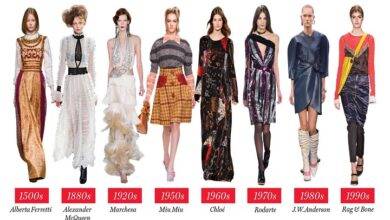
The world will look as worldwide pioneers accumulate in Glasgow toward the finish of this current month for COP26 – 2021, United Nations Climate Change Conference. It will test every pioneer, their country, and people groups’ obligation to the Paris accord. While these conversations and thoughts may appear to be unfamiliar for most, we are not disengaged from inaction results.
As a country, we know the significance of nature, the climate, and individuals, yet we lost track incidentally. We additionally have lost the association with the lavishness of our legacy and the worth it brings to individuals and arrangements it can give.
We see the abuse of these words, “manageable,” “strengthening,” “round,” and are persuaded to think it addresses and takes care of the more severe issues within reach. None of which mean anything or genuinely give sway, in case we aren’t straightforward about how we accomplish these results. The act of straightforwardly sharing data regarding how, where, and by whom items are made is basic.
We can’t accomplish maintainability without being straightforward
Numerous organizations are advancing to react to all the more socially cognizant clients. After the COVID-19 pandemic, buyers progressively need to settle on the best buying choices for themselves, individuals, and the planet. The quickly developing buyer craving for manageability – particularly from the design business – is expanding interest in blockchain innovation that permits brands to show that their items have been created morally and economically. Straightforwardness considers brands responsible, prompting more moral and economic ventures.
How could this be pertinent to the Sri Lankan handloom industry?
Handloom: Then versus Presently
For more than thirty years, my family has run a social undertaking, Selyn, which advances handloom and supports more than 1000 provincial craftsmans across Sri Lanka. Before we jump into the pertinence of blockchain to the business, momentarily get where the business began and where it stands now.
Sri Lankan handloom has a long and respected history of more than 2500 years. Since its beginning, it has been a manageable industry: underway energy utilization is low, and the business has made a considerable number of occupations for rustic craftsmans and networks the nation over. Be that as it may, notwithstanding different endeavors, the business winds up in a condition of weakening inferable from various elements, all the more as of late the adverse consequence of the degrowth of the travel industry area in Sri Lanka. According to my viewpoint, the central issue is that the worth set on Sri Lankan handlooms has lessened lately.
Sadly, handloom is not generally broadly considered a thing of inherent worth that talks about our set of experiences and culture and typify the abilities of gifted craftsmans. Our craftsmans are not generally revered for their abilities and are time after time seen through a cause focal point. Sri Lankan handlooms must be pitched to premium or even extravagance markets, which esteem quality over mass amount and speed. Furthermore and maybe more imaginatively, expanding the straightforwardness of our creative techniques with the reconciliation of blockchain innovation into our stockpile chains will be a vital stage to permit us to more readily recount the Sri Lankan handloom story, tending to the ‘green-washing banter, and furnishing shoppers with specific information to illuminate the buy regarding a higher worth material. Worldwide patterns support this speculation, as these superior business sectors and more cognizant clients are currently longing for the narratives of legacy and obligation that reasonable exchange and ethical brands can tell. This is a chance for the handloom business as well as I would like to think, for some, Sri Lankan brands.
Blockchain: Paving the Way
For those organizations in charge of their inventory chains, particularly those resolved to reasonable exchange and moral exchanging rehearses, blockchain is the ideal device to approve validness and for narrating. With blockchain coordinated from the reason behind sourcing to place to checkout – from fiber to form – with the swipe of a QR code, a shopper would now be completely mindful of what goes into their item and how it is made. Blockchain innovation guarantees that each point in the creation cycle is recorded so buyers can get freely confirmed, constant, itemized metadata of what they need to know.
What’s more, that is not all. Customers can include their data to the QR code, whereafter if given to a companion or exchanged; it empowers the required circularity for the item. For us in the handloom business and any event, for the more extensive clothing area, this implies transparently sharing data concerning how, where, and by whom an item was made. This turns out to be more than a narrating exercise, particularly since this innovation requests that we focus on individuals at all phases of the inventory network: who works for the brand, in what processing plants, under what conditions, would they say they are protected, would they say they are paid a living pay, how long do they work, do they have laborers’ freedoms? It additionally requests that we be aware of the waste we reject into the climate – into our woodlands and our oceans and carries our consideration regarding how we might be more carbon impartial as we expand benefit. It permits us to acculturate our stockpile chains and spread the charges acquired reasonably among every one of those associated with the most common way of taking an item to showcase. We work with individuals, craftsmans, and specialists with many years of ability and experience. They are all critical for the interaction, and our end buyer has the right to realize what goes into meshing make into attire. The poise of our art must be returned to our weavers.
This is more difficult than one might expect. Usually, marks who have put resources into reasonable exchange/moral exchanging and working principles would think that it is not difficult to start the course of a mix. In particular, this cycle will require a change in mentality, away from conventional business approaches of industry rivalry to one of joint effort and participation. For Sri Lankan handloom to flourish, viable associations are needed across the area. Moving towards cocreation in handloom where all partners appreciate the acknowledgment and financial additions is the best way to secure and develop Sri Lanka’s handloom area. This additionally remains constant for the remainder of its art area.
Selyn: Embracing Blockchain
Selyn is Sri Lanka’s quite reasonable exchange handloom organization. Our vision is to advance a manageable plan of action that develops and engages the jobs of over 1,000 ladies in the country. At 30 years of tasks, we focus on changing our industry by empowering the complete straightforwardness of supply chains, incorporating new creation advances, and upsetting the item we offer. We accept that our motivation-driven plan of action will bring considerable financial advantages, better meet manageability objectives, and reestablish pride and nobility among our craftsmans.
We see an alternate future for the handloom area. Having started the most common way of incorporating blockchain into our store network, we accept we can genuinely walk the discussion and present an authentic and dependable art brand to the world. Drawing on our good exchange establishments and utilizing our social endeavor accreditations, and with COVID-19 speeding up our work, Selyn is repositioning its work in the handloom area to address developing business sector openings. Our point is to use a guarantee to moral and feasible practices joined with more noteworthy straightforwardness and eventually cut out a unique specialty for handloom as a significant piece of Sri Lanka’s immaterial social legacy. What’s more, we are striving to carry the business alongside us. We trust that the idea of blockchain in the handloom area is an inventive advance towards situating Sri Lanka as an industry and worldwide pioneer that joins innovation and custom to vanquish manageability.
I’m firmly convinced that blockchain is the eventual fate of handloom and the clothing area in general. Numerous different ventures in Sri Lanka can too profit from getting to this innovation. Even though there are still difficulties to be confronted with the broad reception of blockchain, the future innovation potential is unmatched. The central inquiry currently is the way all set are Sri Lankan brands to accept this future.




